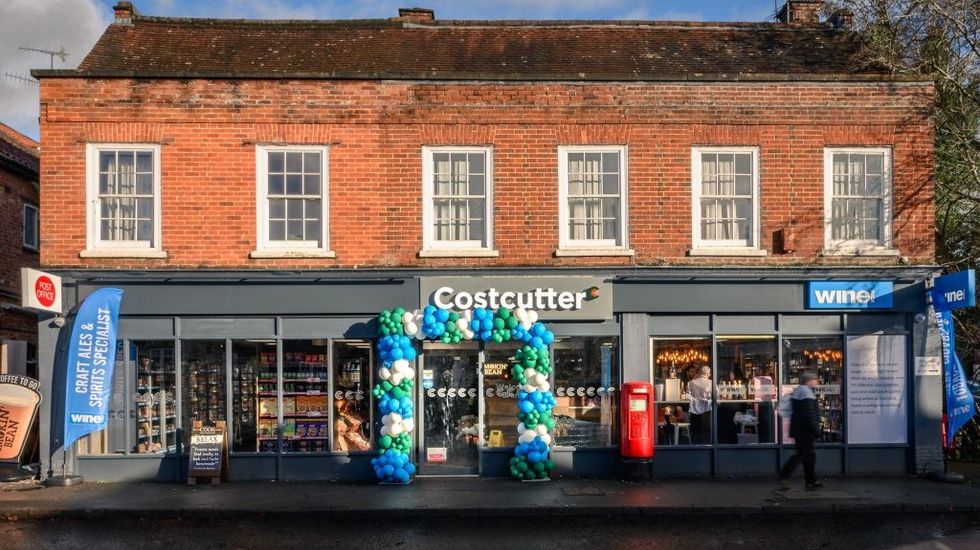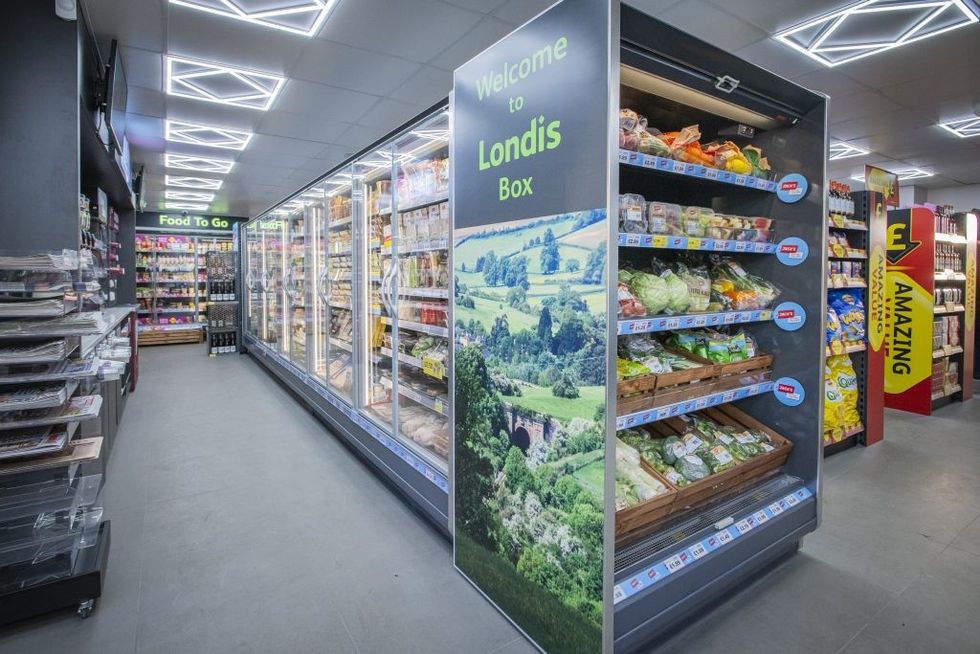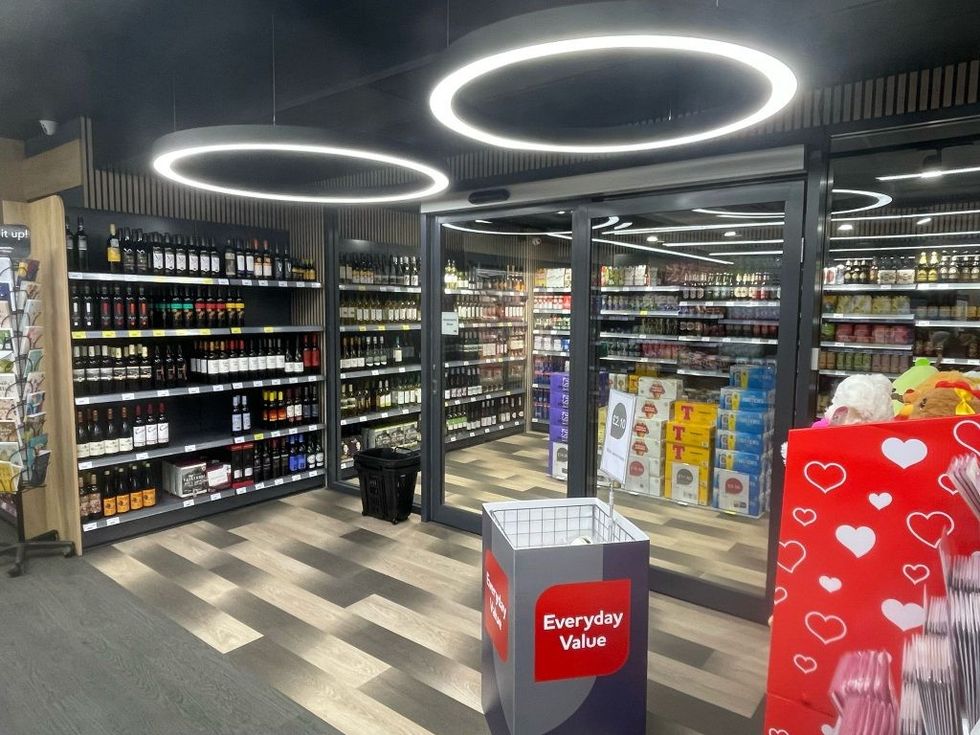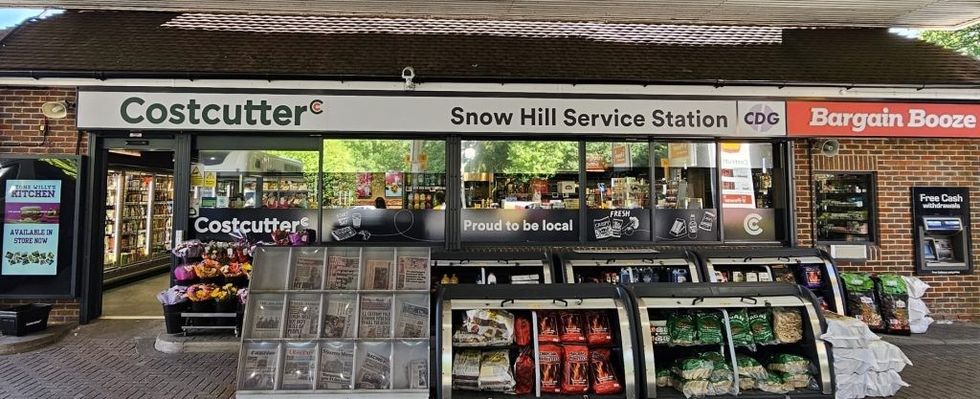Race is on among UK’s symbol groups to introduce and expand new-age hybrid concept store across the country to bring unique and refreshing experience to shoppers as well as best commercial returns for retailers in their attempt to push back supermarkets’ aggressive expansion into convenience channel.
The convenience store market has witnessed strong growth in recent years. In 2020, the market value increased by almost £2.8 billion compared to the previous year. By 2026, it is forecasted to exceed £50bn.
An unprecedented event like Covid-19 lockdown put into spotlight how relevant and necessary convenience stores are. No wonder, now more than ever, supermarkets are investing in convenience formats to strengthen their presence in local communities.
Supermarket Asda had plans to open 110 convenience stores in February as it aims to become the second-biggest grocery retailer in the UK. After the purchase of fuel forecourts and convenience shops from Co-op and the EG Group, Asda has been expanding into the rapidly growing food-to-go and convenience market, following the lead of the likes of competitors such as Sainsbury's Local and Tesco Express. Morrisons expects to finish converting its McColl’s estate to its Daily format by the end of the year.
With supermarkets clearly eyeing a slice of the multi-billion-pound convenience channel, competition is heating up. To upgrade their look and feel and start apart from the competition, various symbol groups are now coming up with new age concept as well as hybrid stores.
Dual and Hybrid
The term ‘hybrid’ has become a buzzword in the sector, and Bestway is clearly being quite innovative here. Following the launch of its dual-branded Costcutter and Bargain Booze fascia in 2022, the wholesaler has already launched 18 such hybrid stores.
Another posher format recently launched by Bestway is Costcutter and Wine Rack combi-store, a concept that is set to be rolled out wider across the Southwest. The first of its kind was opened in Guildford in December last year.
The store in Bramley, outside Guildford, has been totally refurbished as part of a £250,000 investment, being taken back to its shell and remodeled into a more premium alcohol and convenience shop which includes an artisanal bakery, package-free products, premium wines, 30 different champagnes and more than 50 craft beers and ales.
It will also host local wine tasting and food pairing events. The company has entered talks with local breweries, distilleries and suppliers to come up with a unique and complete offer to suit its customer base.
Jamie Davison, Retail Director at Bestway Retail told Asian Trader, “We focus on assessing the opportunity a store has and then clearly identifying how it can best meet the required needs and shopper missions. This includes consideration for providing a greater experience for existing shoppers and equally ensuring a relaunched store is seen as offering an enhanced range and overall service, to appeal to a wider audience.
“At our first Costcutter with a Wine Rack store in Bramley, Guildford, we have doubled retail sales compared to our previous standalone convenience offer. This truly demonstrates the power of bringing together market leading drinks and convenience offer.
“Overall our new format of a Costcutter with a Bargain Booze store continues to perform strongly, with average sales increasing by +30 per cent post launch,” Davison said.
Both these new formats are able to present known established brands, great shopping environments, strong fresh and chilled ranging, recognised and trusted Own Label ranging, specialist Beers, Wines and Spirits range including great ongoing multibuy pricing, strong relevant “local product” ranging and fantastic customer service by independent retailer teams that care, Davison said.
Bestway has completed 18 dual branded stores and have a further 10 sites in development including its first Bargain Booze with a Best One store, Davison told Asian Trader.
Davison added that Costcutter and Wine Rack dual store is an “immensely exciting milestone” and the launch continues the company’s market leading journey into the opportunity that hybrid stores can offer.

“This upmarket convenience store concept aims to meet the needs of our customers, so they are able to buy everything they need across a full day and different shopping missions. And it’s just the beginning of the journey,” Davison said.
Way Forward
In this race, wholesale giant Booker is also determined to stay ahead. It has recently launched a new concept symbol Londis Box, the pioneer of which was unveiled on Jan 10 in Wiltshire.
A spokesperson from Booker explained to Asian Trader how Londis Box is different from others.
“Externally, the store has new look of anthracite grey fascia with green Londis logo. There are new branding window graphics with product imagery against alternative blue and green backdrops.”
New Londis Box store also has an innovative Community Board.
“Internally, Londis Box has special emphasis on Food to Go branding. It has a special section called "The Cooler" (chilled beer, cider and wine) with illuminated branding.
“New look also has a welcome panel including a local point of interest. Apart from the food to go section, Londis Box store also has new-look food to go meal deal POS, new POS for frozen, World Foods, Free From and Protein rich food.”
The store also has new internal graphics and lit category signage and amazing value branding, Booker spokesperson told Asian Trader.
Retailer Sugeshan Jegasothy, the owner of Londis Box store in Wiltshire (third store in his portfolio), invested a huge sum in new roofs and internal works. The full refit now showcases the Londis brand new guideline as well as striking new in-store features, including The Cooler and new food-to-go area complete with an impressive bespoke bakery zone along with a comprehensive 12 metres range of fresh, chilled, and frozen foods.
The 1530 sq ft store was originally built as a community shop back in 1925. The inside of the store showcases new branding and marketing features, including new-look Welcome panels showing local points of interest which is an image of the famous Box Railway Tunnel chosen by local community group Box People and Places.
Jegasothy said, “The whole store looks absolutely incredible. The Londis team have done the most fantastic job on the refit and merchandising. There’s so much range in here yet the store still feels so bright and spacious.
“My RDM Rachel Drake and Regional Development Controller Vince Brown have also both been so supportive, and I can’t thank them enough. I’m just so excited to get going and so proud that this store has been selected as the first to showcase the new concept.”

On similar lines, Nisa too is constantly thriving to keep things fresh and inviting.
Four years on from the launch of its Store of the Future 2 Evolution format, Nisa today offers the option to use the new updated Nisa fascia - Nisa Local, Nisa Express or Nisa Extra.
Announced in October 2023, Nisa is set to update more than 300 stores over the next three years as part of a large rebranding, ensuring consistency across its estate.
Nisa spokesperson told Asian Trader, “Nisa’s format offering seeks to modernise and enhance the brand’s identity, supporting ambitions to be the most forward-thinking symbol group in the sector.
“The new concept stores enable retailers to offer a variety of new and exciting offerings. This includes hot food to go counters, beer caves, coffee machines and soft drink machines. These offerings are not typical of a convenience store, thus attracting a variety of new and different customers leading to an increase in footfall and sales.”
Nisa spokesperson stated that retailers who update their store fascia see an “11 – 13 per cent uplift in sales”, showcasing the positive impact refits have on footfall. One such example is Holden family store in Great Eccleston, who saw turnover increase from a typical £32,000 a week to £43,000 a week.
Most recently, Nisa retailer Douglas Fraser redeveloped his Nisa store D & M Fraser in Thurso, Scotland. Douglas made a £250,000 investment in the store – completely redeveloping his traditional store to the new Nisa format, and greatly enhancing the store’s offering to include a full Food to Go offering, slushy machine, coffee machines, fresh goods, hot food offering and an in-store bakery.
Douglas’ reinvigorated store will have its official opening on March 8.
“Following the refit and expansion of his in-store offering, Douglas has already seen a rise in footfall across various demographics. The Squishy machine has been very popular amongst children and teenagers on their way home from school, whereas the hot food section has been popular among commuters from the local housing estate,” stated the Nisa spokesperson.

As a result of the redevelopment, Douglas has seen a significant rise in footfall in his store. The rise in footfall has been significant, with Douglas’ soft launch receiving higher levels of sales and footfall than the usual busiest day of the year, Christmas Eve.
Parfetts’ Go Local fascia believes that the power of independent stores is its flexibility to meet local customer needs therefore Parfetts’ fascia emphasises on data-driven insights to tailor store designs.
Steve Moore, the head of retail at Parfetts, told Asian Trader, “The ability to adapt quickly is a key competitive advantage over the multiples, and it underpins the Parfetts approach to store development.” At Parfetts, the team leverages data-driven insights to tailor store designs to local needs. They recognise that a store's layout should be fluid, adjusting according to its customer demographic. This means flexible space allocation for different product categories, including chilled and frozen goods, as well as potential changes in location and product offerings.
“Our offer is truly bespoke for each store. By optimising every aspect of the shopper's journey, independent retailers can craft a shopping experience that captures and fosters customer loyalty, ultimately leading to increased sales. Enhancing the shopper journey elevates the overall store experience to drive higher basket spending and bolster sales and margins.”
Moore added that moving to the Go Local fascia typically yields a notable sales and margin increase of 10 to 15 per cent for retailers.
“A key component of this success is a bespoke store design tailored to local needs, complemented by access to an industry-leading mix of promotions and offers.”
Additionally, Parfetts continues to invest in retail development advisors (RDAs) to increase numbers nationally to provide high levels of service and expertise to store owners. RDAs advise on market trends, store merchandising and store sales optimisation, which are all designed to increase sales and margins for its retailers.
Win-Win
With the advent of more supermarkets’ c-stores opening in local communities, shoppers will soon be getting used to a particular standard of experience.
The convenience sector and symbol groups are cooking up some serious innovation to stay ahead of the game. With appetites for convenience reaching new heights, it's time to turn up creativity and stand out in the market like never before.







